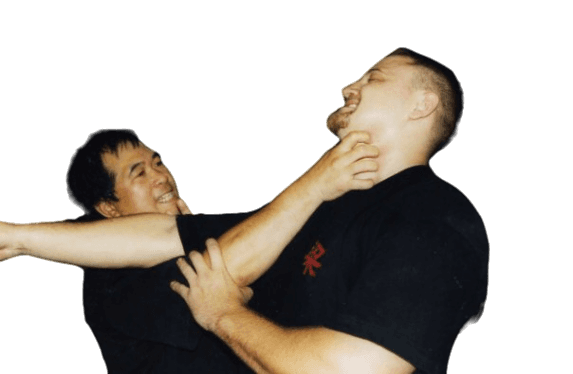Chi Sao in Self-Defense: How to Use Wing Chun Techniques to Protect Yourself
By Maurice Novoa a master under the Yuen Kay Shan, Ip Man and Pan Nam lineages.
Introduction:
In today’s world, personal safety and self-defense are important considerations for everyone. Wing Chun, with its practical and efficient techniques, offers valuable tools for self-defense. Central to Wing Chun is the practice of Chi Sao, a unique training method that enhances sensitivity, reflexes, and adaptability. In this article, we will explore how Chi Sao can be effectively used in self-defense situations to protect yourself.
1. Developing Sensitivity and Awareness
Chi Sao training cultivates a heightened sense of touch and awareness. By practicing sensitivity drills and learning to read your opponent’s movements, energy, and intentions, you develop the ability to anticipate and respond effectively to threats. This heightened sensitivity allows you to detect subtle changes and react swiftly, giving you an advantage in self-defense situations.
2. Utilizing Close-Range Techniques
Wing Chun’s focus on close-range combat makes it particularly effective for self-defense in confined spaces or when facing an aggressor in close proximity. Chi Sao helps you refine close-quarters techniques such as simultaneous attack and defense, trapping, and efficient striking. By maintaining a solid centerline and employing techniques like Tan Sao, Bong Sao, and Fook Sao, you can effectively neutralize an attacker’s strikes and launch your own counterattacks.
3. Deflecting and Redirecting Force
Chi Sao enhances your ability to deflect and redirect an attacker’s force, neutralizing their attacks and creating openings for counterattacks. Through the practice of techniques like Lap Sao, Pak Sao, and Jut Sao, you learn to redirect incoming strikes, maintain control of the opponent’s limbs, and capitalize on their vulnerabilities. This enables you to subdue an aggressor effectively while minimizing the risk of injury to yourself.
4. Efficient and Economical Movements
Wing Chun’s emphasis on efficiency and economy of motion is particularly beneficial in self-defense scenarios. Chi Sao trains you to utilize direct, straight-line strikes, making your techniques faster and more effective. By eliminating unnecessary movements, you can neutralize threats swiftly, conserving energy and maintaining control of the situation.
5. Improving Balance and Stability
Chi Sao training requires maintaining a stable and balanced stance while engaging with an opponent. This improves your overall balance and stability, making it more difficult for an aggressor to destabilize you. By practicing techniques like Biu Sao and Huen Sao, you develop the ability to recover quickly from disruptions and maintain your footing, allowing you to effectively defend yourself.
6. Adaptability and Simultaneous Attack and Defense
Chi Sao hones your ability to adapt to changing circumstances and execute simultaneous attack and defense. This crucial skill allows you to maintain constant pressure on an attacker while defending yourself. By practicing techniques like Lop Sao, Gwoh Sao, and Jik Chung Choi, you learn to seamlessly transition between defense and offense, exploiting openings and maintaining control of the situation.
7. Confidence and Mental Resilience
Chi Sao training not only enhances physical techniques but also builds mental resilience and self-confidence. By repeatedly engaging in controlled combat scenarios, you develop the ability to stay calm under pressure, think critically, and make effective decisions in self-defense situations. This mental fortitude is invaluable in diffusing potentially dangerous situations and protecting yourself.
8. Continued Practice and Realistic Training in Wing Chun
To effectively utilize Chi Sao techniques in self-defense, consistent practice and realistic training are essential. Regularly practicing Chi Sao drills, engaging in realistic scenarios, and seeking professional guidance ensure that your skills are honed and can be applied effectively when faced with a real threat.
Remember, self-defense is about avoiding dangerous situations whenever possible. However, having the knowledge and skills provided by Wing Chun
and Chi Sao can significantly increase your chances of protecting yourself if faced with a physical altercation.
Stay vigilant, develop your Wing Chun skills through Chi Sao training, and empower yourself with the tools to stay safe in an unpredictable world.
Conclusion
In conclusion, Chi Sao is a vital component of Wing Chun that equips individuals with the skills necessary for effective self-defense. Through the practice of Chi Sao, practitioners develop heightened sensitivity, awareness, and adaptability, allowing them to read and respond to potential threats with speed and precision.
By mastering close-range techniques, deflecting and redirecting force, and employing efficient and economical movements, individuals trained in Chi Sao can neutralize attackers effectively while minimizing the risk of harm to themselves. The emphasis on balance, stability, and simultaneous attack and defense further enhances their ability to protect themselves in real-world situations.
Beyond the physical aspects, Chi Sao training instills confidence, mental resilience, and the ability to make critical decisions under pressure. It empowers individuals to stay calm and assertive, diffusing potentially dangerous situations and safeguarding their well-being.
However, it is important to emphasize that self-defense is about avoiding conflict whenever possible. Chi Sao and Wing Chun provide the tools to protect oneself if necessary, but it is essential to prioritize personal safety and seek non-violent solutions whenever feasible.
By consistently practicing Chi Sao and engaging in realistic training scenarios, individuals can further refine their skills, ensuring their readiness to respond effectively to potential threats.
Equip yourself with the knowledge and skills of Chi Sao, and take the steps to enhance your personal safety and self-defense capabilities.

